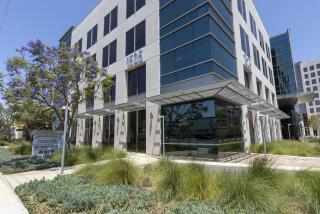Cancer Registry Seen Aiding Research : Facility to Record Data on Cases in S.D., Imperial Counties
- Share via
State health officials are predicting that 9,000 cases of cancer will be recorded in San Diego and Imperial counties in 1988 using a new regional tumor registry that is mandated by state law and is scheduled to begin operation today.
The registry, centered at UC San Diego Medical Center, will include such information as the type, severity and treatment of every reported case of cancer, as well as demographic data such as the age, race, sex and address of each cancer patient.
Hospitals and health care planners are expected to use the information in locating new facilities and assessing the efficacy of cancer prevention programs. Researchers and public health officials may use the data to monitor and explore unusual cancer patterns.
“If we see a cluster of cancer in one particular neighborhood, it would certainly give a clue as to what might be a cause of it,” Dr. Sidney Saltzstein, a professor of pathology at UCSD and director of the regional registry, said Thursday.
The tumor registry is the result of a 1985 state law requiring that all cancer cases be reported to public health authorities--a law that laid the groundwork for what will be the largest cancer data base in the U.S. covering an entire population rather than a sample.
10 Reporting Regions
The law carved California into 10 regions, each with an authorized registry. All hospitals and doctors must report every cancer case to their regional registry, which in turn will report those data to a central registry in the state Department of Health Services.
Dr. Kenneth Kizer, the department director, said in a statement released Friday that the system will give his department a way of quickly evaluating residents’ concerns about cancer rates in their neighborhoods or workplaces.
The San Diego region is the eighth in the state to put its registry on line. Under the law, other regions were required to start sooner because of documented cancer problems suspected to be associated with environmental or occupational conditions.
Saltzstein said there are currently few known cancer trends in this region.
“Not really, that we’re aware of,” he said, when asked about patterns among the region’s 2.3 million residents. “There could be some very important and interesting ones. We just don’t know because we haven’t had a good, overall sample.”
Ken August, a spokesman for the state health department, said hospitals will use the new data to characterize the populations they serve, gauge the need for in-house cancer treatment facilities and to compare their treatments to those used by other hospitals.
Researchers and public health investigators may use the registry to monitor cancer incidence rates in different population groups “both as an early warning system and as an ongoing surveillance method,” August said.
Help for Health Planners
Others who might be interested in analyzing the data include local health planners assessing the cancer patient load in different service areas, and health agencies called upon to assess the validity and magnitude of suspected cancer clusters.
Saltzstein said the data may also be useful in gauging the efficacy of cancer control programs. For example, a declining average size of breast cancers might indicate that programs encouraging mammograms are working, he said.
Saltzstein said the regional registry will periodically publish reports based on the accumulating data and will report regularly to the county Department of Health Services, which in turn will publish findings.
The names of patients and individual patient information will be confidential.
The state-funded registry will have an annual budget of about $400,000.
More to Read
Sign up for Essential California
The most important California stories and recommendations in your inbox every morning.
You may occasionally receive promotional content from the Los Angeles Times.













